From medieval coaching inns to Victorian gin palaces and workmen’s alehouses, pubs are a quintessentially British and at the heart of local life.
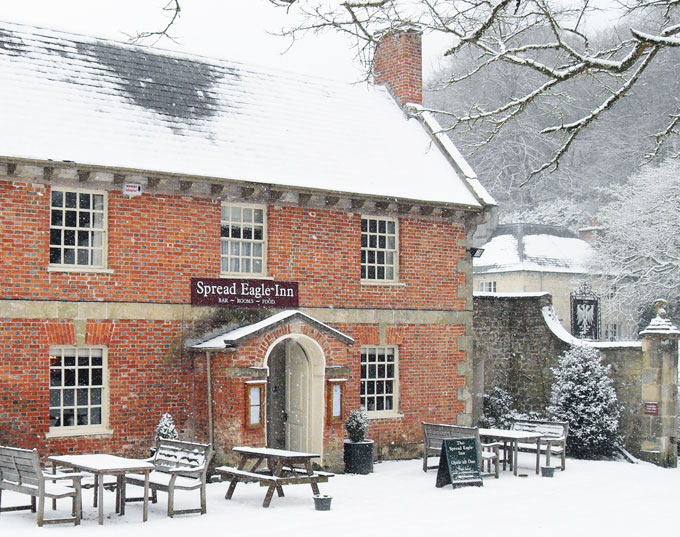
Other countries may boast bars, brasseries, bistros and cafés but there’s nowhere that does pubs quite like Britain. It’s not surprising, when you consider that alehouses, taverns and inns have been at the heart of British life since Roman times, with little sign of the status quo changing as the 21st century takes hold.
The Angles, Saxons and Danes who invaded after the Romans and settled in England were great beer drinkers; the word ‘ale’ comes from the Saxon ‘ealu’ and the Danish ‘ol’. Brewers opened their homes for people to gather and drink, hence the unique concept of public houses.
The sheer longevity of many of these buildings means that Britain’s pubs have become icons of living history, with the plots, love affairs and business transactions of hundreds of years etched into their very stones. It’s hard to choose from the range of delightful watering holes on offer, but here are 10 particularly special places that showcase the best of British pubs.
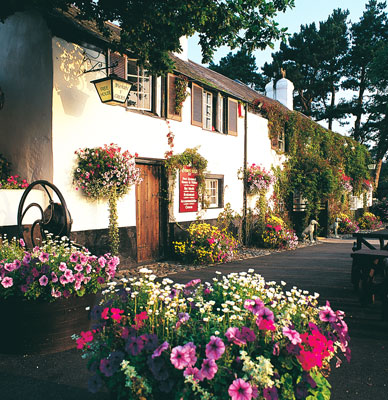 Groes Inn, just outside Snowdonia National Park in Wales, is a perfect example of a classic coaching inn. The building’s history dates back to the 15th century and in 1573 it became the first licensed house in all of Wales. The popularity of the inn is reflected in the blend of architectural additions that trace the successes of the 16th, 17th and 18th centuries. It’s clear people have been meeting here for a long time.
Groes Inn, just outside Snowdonia National Park in Wales, is a perfect example of a classic coaching inn. The building’s history dates back to the 15th century and in 1573 it became the first licensed house in all of Wales. The popularity of the inn is reflected in the blend of architectural additions that trace the successes of the 16th, 17th and 18th centuries. It’s clear people have been meeting here for a long time.
Unsurprisingly then, it’s an inn that is proud of its history. Inside you’ll find original fireplaces complete with stone cats standing guard, as well as all manner of trinkets that the inn has managed to collect and preserve throughout the years. It’s cosy and relaxed, and the sublime views of the Welsh countryside offer another explanation for the inn’s continued popularity.
Next is a contender for the coveted title of the country’s oldest pub. Ye Olde Trip to Jerusalem, built beneath Nottingham Castle and purportedly established in 1189, is a place where the lines between ‘now’ and ‘then’ seem to blur in a fascinating way.
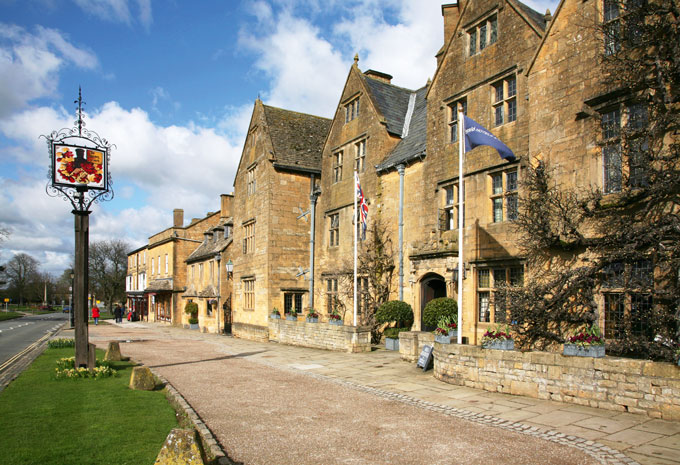
Of course its very name speaks to its past – it was once a stopping-off place for those called to crusade by Richard the Lionheart, before their journey to reclaim the holy land of Jerusalem could begin. It’s spectacularly situated, above a labyrinth of sandstone cave cellars, past locations of erstwhile cockfighting pits and the castle gaol, and with parts of the building hewn from the rock on which the castle above it stands. Visitors to the inn can still admire the black and white timbering of parts of the external building, as well as wander through the higgledy-piggledy interior with its series of atmospheric connecting bars.
For something a little more genteel, a trip to the ever refined Cotswolds is the order of the day. In the centre of the pretty town of Broadway, built from characteristic Cotswold honey-coloured stone, stands The Lygon Arms (3), these days a popular hotel. It began life as the White Hart Inn, benefiting from the bustling wool trade that made the Cotswolds rich in the 15th and 16th centuries, and this sense of prosperity and comfort lingers on.
Remaining impartial in the way that only a pub can, it is also said to have hosted both Oliver Cromwell and King Charles I during the English Civil War. And although Cromwell’s visit seems somewhat more likely than Charles’s, The Lygon Arms, with its flagstone floors, wood panelling and stone mullions, remains an inn that truly is ‘fit for a king’.
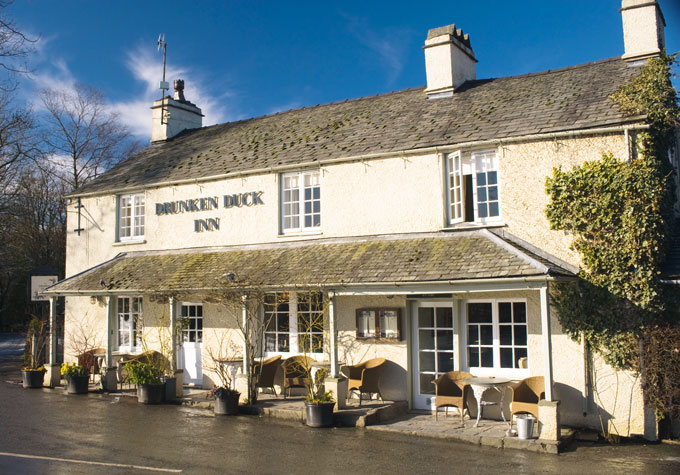
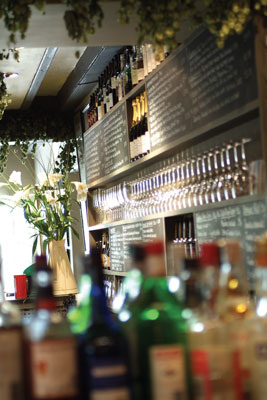
Aside from their sheer numbers, one of the things that demonstrates how fully integrated pubs and inns are within British life is the variety of locations in which they can be found. You’d have to go some way, however, to beat The Drunken Duck Inn in Ambleside for remoteness, standing alone as it does on top of a wooded hill amid all of the glory of the Lake District. At a mere 300 years old it’s comparatively young as British pubs go, but that’s more than enough time for it to have accumulated its own rich and quirky history.
Most appealingly, The Drunken Duck’s unusual name apparently refers to a rather literal event, in which a Victorian landlady found her ducks intoxicated after beer leaked into their feeding trough. Assuming the soporific ducks were dead she began to pluck them for the pot, whereupon they revived before the fatal moment! Perhaps fittingly the modern Drunken Duck is a ramblers’ pub, renowned for rewarding hungry walkers with fantastic food, including some rather tasty duck dishes. There’s a slate bar and even a microbrewery next door, proving that the best traditions of the country pub are alive and well.
The Adam and Eve pub in Norwich contents itself with being the oldest in the city, but with a recorded history as an alehouse that stretches back to 1279 and an unofficial history that can be traced even further (a Saxon well is said to exist on the site), it could throw its hat into the ring for the countrywide title too.
A pretty redbrick building with striking Flemish gables, its unusual architectural features seem to walk hand in hand with its curious back-story. This is a public house where the ale was first brewed by monks and since then it has been visited by stonemasons, smugglers, murderers and queens (Queen Elizabeth I passed the Adam and Eve in procession in 1578), once again demonstrating the extraordinary power of the pub to unite all cross sections of society. So much history makes the presence of a ghost or two almost inevitable and the pub is a starting point for ghost walks around Norwich.
From a pub that is entwined with the town in which it sits, to one at the heart of village life. When you think of an archetypal English country pub, complete with thatched roof, beamed ceilings and wonky walls, it’s probably something not too far from The Star Inn, Harome on the edge of the North Yorkshire moors that you have in mind. The 14th-century building looks like it’s been lifted from a greetings card, with its picture-perfect surroundings overlooking the village duck pond.
Inside, things retain a fairytale charm. There are open fires, low beams and even mice (happily of the wooden variety – carved into the fabric of the building). It’s peaceful: where the rhythms of village life remain intact.
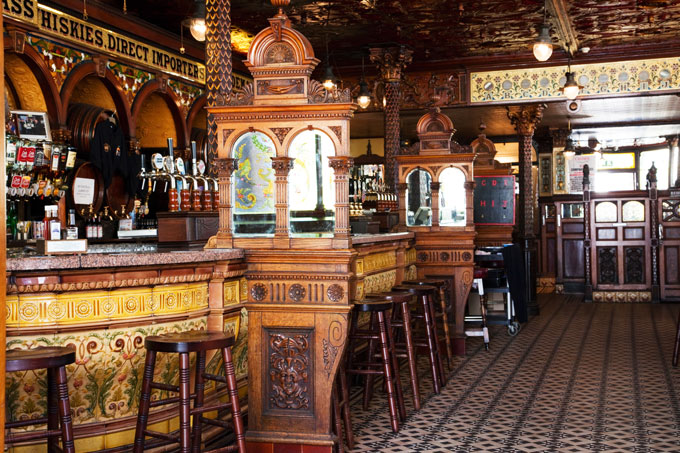
For an utterly different take on the British pub, National Trust-owned The Crown Bar in Belfast has oodles of wow factor. This lavish building brings a certain glamour to proceedings and thoroughly justifies its status as an outstanding example of one of the Victorian gin palaces described by author Charles Dickens as “perfectly dazzling”. If its extravagant, flamboyant style seems rather at odds with British reserve, then that may well be because its Victorian owner persuaded Italian craftsmen, working by day on churches in the city, to spend their time after hours on the pub. There are mosaics, carved ceilings and even stained glass windows, adding to the feeling that this is a rather opulent place for a drink.
From the extravagance of The Crown Bar, to a rather different type of pub, The Drovers Inn. Situated on a lonely road at the top end of Loch Lomond, it is no less atmospheric. A beacon of Scottish hospitality, its stone walls speak of a pub used to withstanding both the elements and its own isolation, since it opened in 1705. The inn is named for the hardy souls who once drove cattle down the side of the loch en route to market.
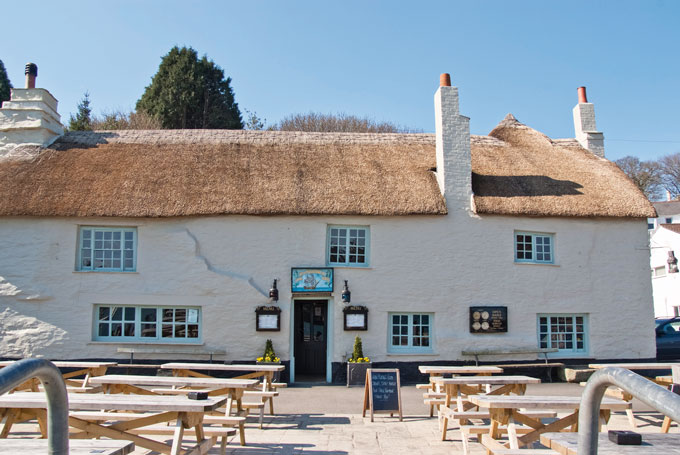
Despite its picturesque yet rather austere exterior, within The Drovers you’ll find a treasure trove of eccentricity, from all manner of stuffed animals, including a rather ferocious bear, to open fires and an air of rustic comfort that makes it easy to love and hard to leave.
The Stourhead estate in Wiltshire offers one of the most beautiful and magical examples of landscaped gardens in the country, so it seems entirely appropriate that it should also have its own handsome and historic pub. The redbricked symmetry of the front of the Spread Eagle Inn hasn’t changed much since the early 18th century and the smell of wood smoke wafting from its chimneys still evokes all the pleasures of an English country tavern. Of course, if you look more closely you’ll see that the Georgian and Regency eras have left their touches upon the building in turn, with period fireplaces and sash windows aplenty. Best of all, if you stay overnight, you’ll have the chance to survey the wonders of Stourhead after everyone else has gone home.
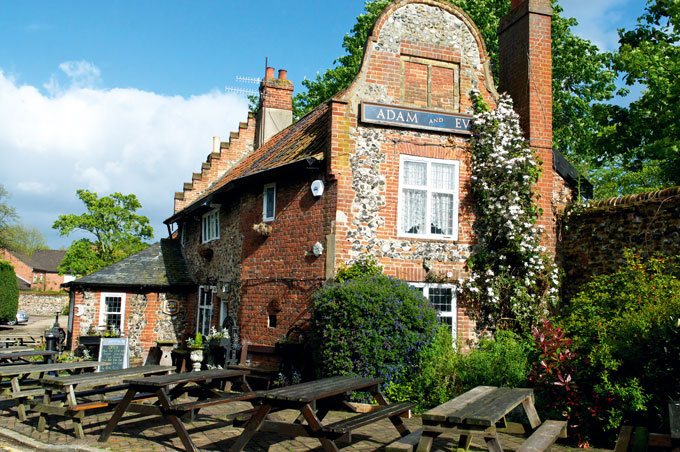
The British Isles, by their very nature, are lucky to possess an abundance of coastal inns and hostelries, and proximity to the sea seems to impart a unique character and flavour to the pubs that look out over it. This is certainly true of the Pandora Inn, perched on the edge of the Restronguet Creek in south Cornwall. For starters, it’s a splendidly picturesque building – with whitewashed walls and a thatched roof. Inside, the inn’s 13th-century origins manifest themselves in low beams and stone floors, and it’s easy to imagine that the dogs snoozing peacefully under tables might well belong to some sea captain recently back from a voyage. The Pandora takes its current name from one such seafarer, Captain Edwards, whose ship HMS Pandora struck the Great Barrier Reef in 1791, killing many of its unlucky crew. On his return to Cornwall the captain purchased the inn, naming it in memoriam and ensuring that centuries later people would still speak the name of his lost ship.
These establishments merely scratch the surface when it comes to the delights of pubs and inns in Britain. Even the tiniest hamlet or most remote village may well boast an exceptional inn and one of the great pleasures of exploring Britain is the discovery of these gems of hospitality, hidden down country lanes and tucked away in city centre passageways. Surely that’s got to be worth taking the time for a drink or two.





 © 2024
© 2024